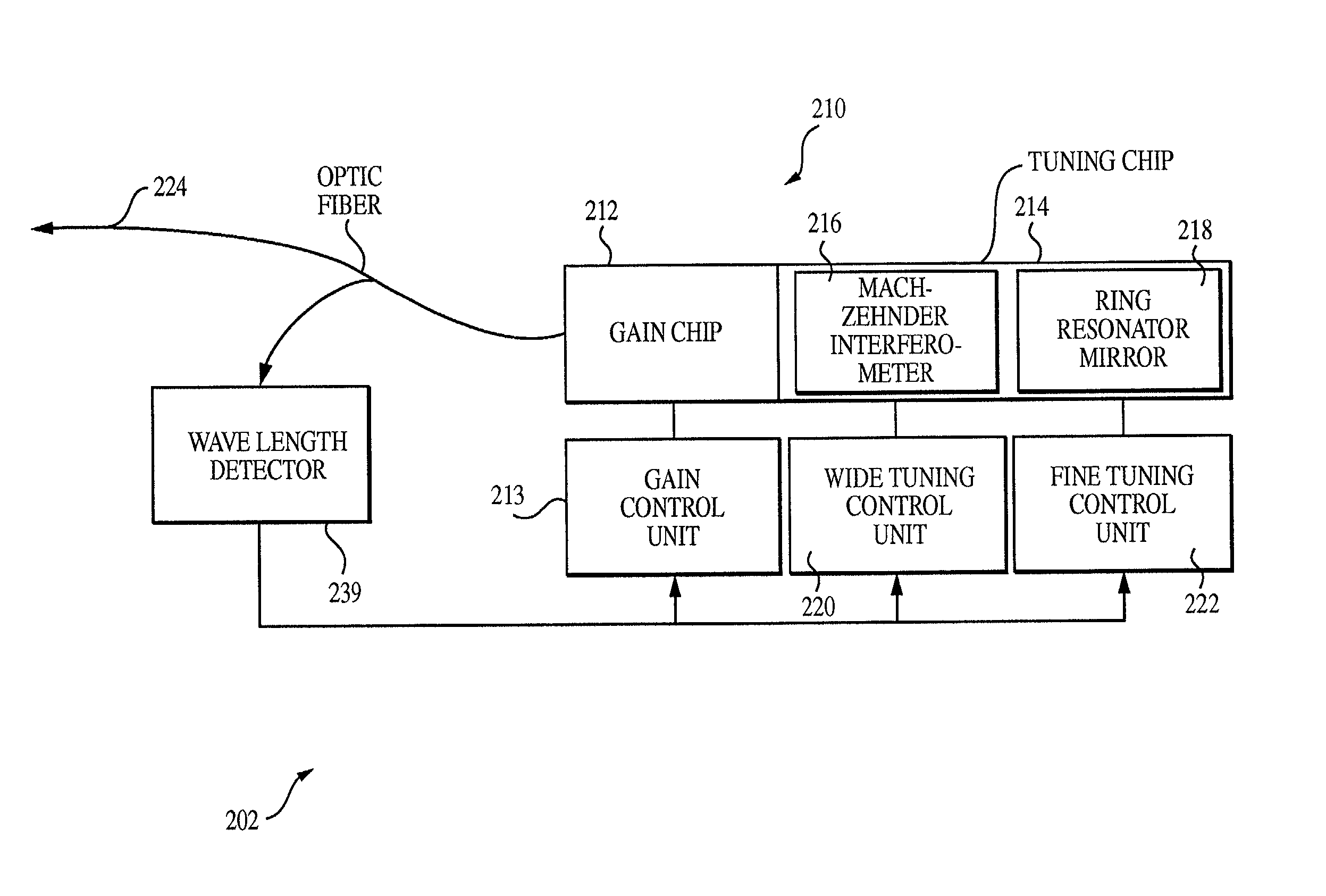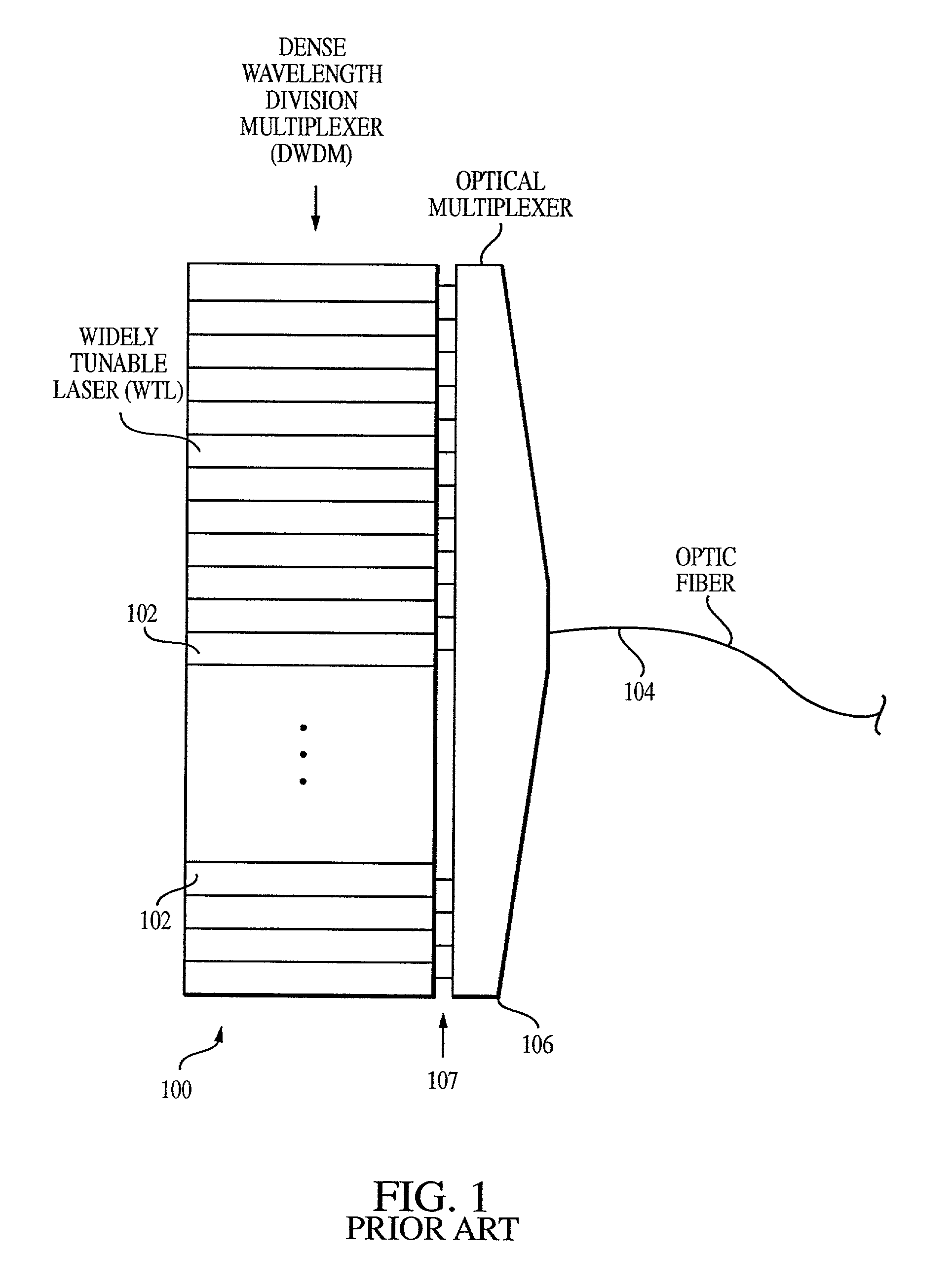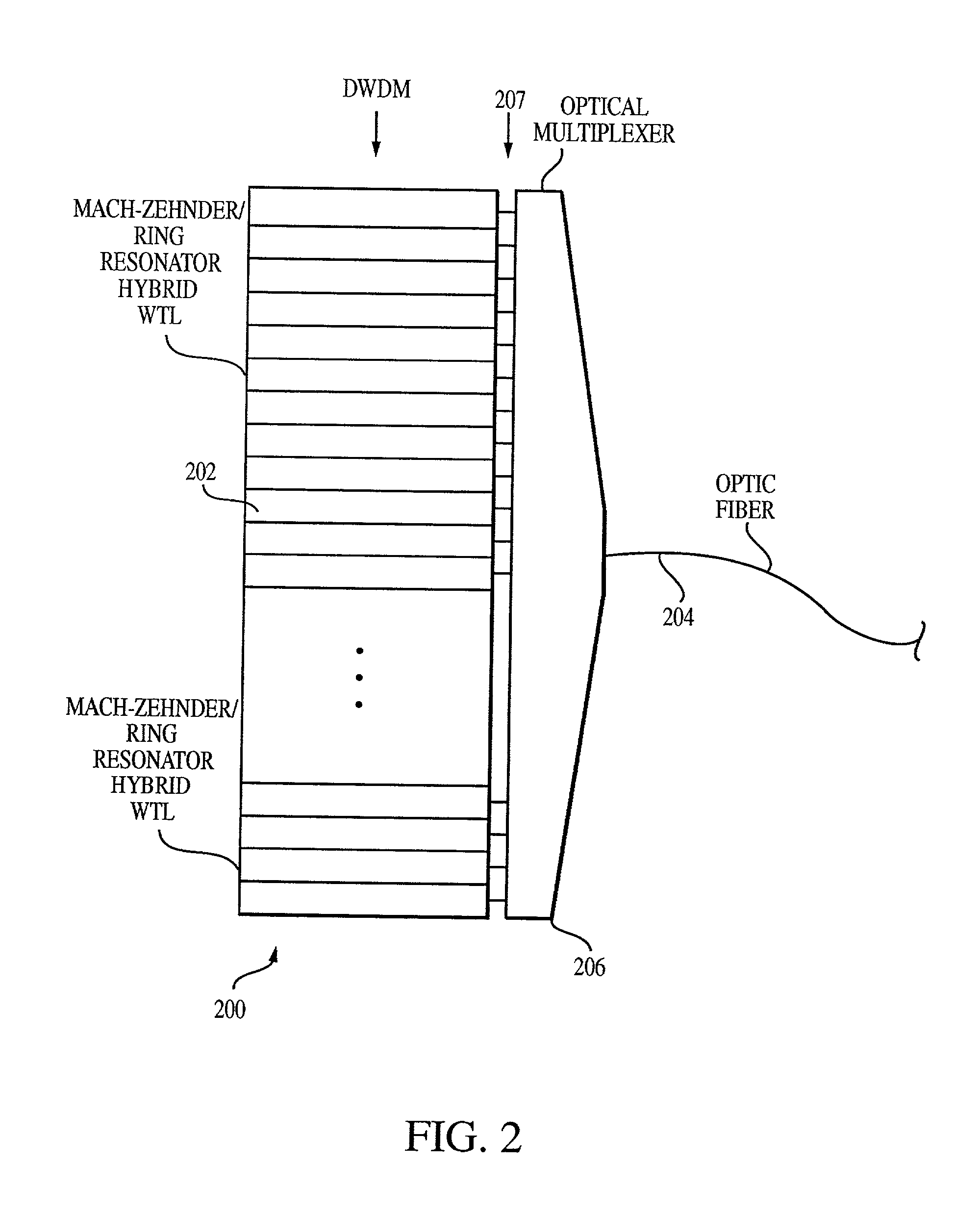Tunable semiconductor laser having cavity with reflective Fabry-Perot etalon and Mach-Zehnder interferometer
a semiconductor laser and reflective fabry-perot etalon technology, applied in the direction of laser details, laser optical resonator construction, optical resonator shape and construction, etc., can solve the problems of optical interference, optical signal not at the resonance wavelength of the fabry-perot side channel not effectively coupling into the reflective etalon, optical interference, etc., to reduce data transmission error rate, greatly reduce the amplitude of sidebands, and greatly reduce the effect o
- Summary
- Abstract
- Description
- Claims
- Application Information
AI Technical Summary
Benefits of technology
Problems solved by technology
Method used
Image
Examples
Embodiment Construction
[0026] With reference to the remaining figures, exemplary embodiments of the invention will now be described.
[0027] DWDM with Mach-Zehnder / Ring-Resonator WTLs
[0028] FIGS. 2-8 illustrate an exemplary embodiment of a DWDM having a hybrid WTL formed using a Mach-Zehnder interferometer as a wide tuning port and a ring resonator as a wavelength-selective mirror. Referring first to FIG. 2, a DWDM 200 is illustrated with forty individual hybrid WTLs 202 for transmitting optical signals on forty ITU C-band channels via a single optic fiber 204. An optical multiplexer 206 couples signals received from the individual hybrid WTLs via a set of intermediate optic fibers 207 into output optic fiber 204 to a demultiplexer (not shown) provided at the far end of the optical fiber. Each hybrid WTL is tuned to transmit optical signals at a wavelength selected from the forty channel ITU C band for use in optically transmitting signals along output optic fiber 204. The signals may be, for example televi...
PUM
 Login to View More
Login to View More Abstract
Description
Claims
Application Information
 Login to View More
Login to View More - R&D
- Intellectual Property
- Life Sciences
- Materials
- Tech Scout
- Unparalleled Data Quality
- Higher Quality Content
- 60% Fewer Hallucinations
Browse by: Latest US Patents, China's latest patents, Technical Efficacy Thesaurus, Application Domain, Technology Topic, Popular Technical Reports.
© 2025 PatSnap. All rights reserved.Legal|Privacy policy|Modern Slavery Act Transparency Statement|Sitemap|About US| Contact US: help@patsnap.com



